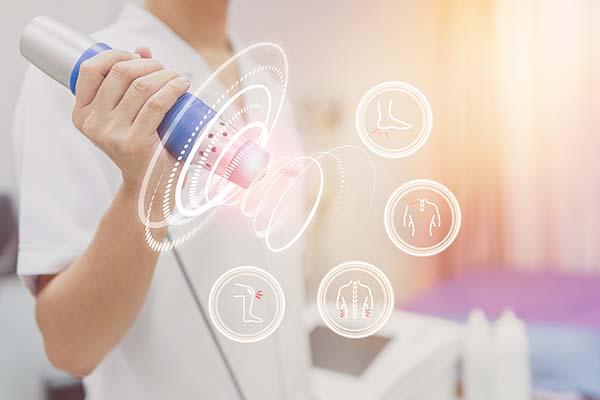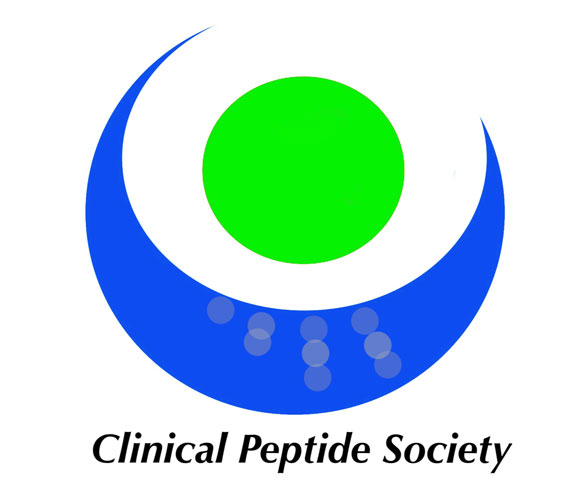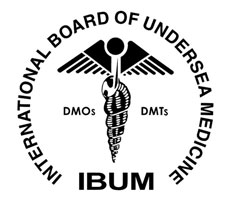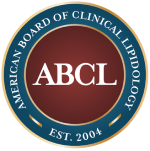Promote Healing With Shockwave Therapy

Shockwave therapy is a treatment method for a variety of chronic musculoskeletal conditions. It is often used for individuals who have issues with medium to large-sized tendons and how they meet the bone. Shockwave therapy utilizes acoustic waves to stimulate the body's natural healing processes and make it easier for people to get back to enjoying their lives with more mobility and less pain.
Understanding shockwave therapy
Extracorporeal shock wave therapy (ESWT) involves the application of high-energy acoustic waves to specific areas of the body. The device generates these waves with a device the produces a controlled explosion, creating a shockwave that is transmitted through a medium (typically a gel or oil) and directed towards the targeted tissue.
This treatment method was originally developed to treat kidney stones. However, researchers found that shockwave therapy can address musculoskeletal issues. Today, medical professionals use it to alleviate pain and promote healing in conditions ranging from tendonitis and plantar fascitis to calcific shoulder tendinopathy and stress fractures.
How does it work?
Shockwave therapy operates on the principle of mechanotransduction, where mechanical energy is converted into biochemical signals within the body. When applied to injured or damaged tissue, shockwaves stimulate cellular responses, enhancing blood flow, cellular repair, and regeneration. The therapy also triggers the release of growth factors, which is an important part of natural tissue healing. This cascade of events ultimately promotes the body's innate ability to repair itself, accelerating the recovery process.
A single treatment usually takes between 15 to 20 minutes. Over several weeks, a patient will usually receive three to five treatments, depending on the severity of their injury. The treatment sessions may be uncomfortable, but most do not find it painful. However, this discomfort depends on the nature and location of the injury; treatments delivered closer to a bone are typically more uncomfortable. As soon as treatment is over, the discomfort usually starts.
The effectiveness of shockwave therapy
Shockwave therapy is often more effective when combined with other therapies, such as physical therapy and platelet-rich plasma (PRP) injections. It is also important to remember that the results of shockwave therapy may take time to appear. However, patients should experience increased relief as their injured tissues heal.
The benefit of a targeted approach
One of the most significant advantages of shockwave therapy is that medical professionals can target specific areas of the body. The focused application allows them to make precise movements and ensure maximum effectiveness with a minimally invasive approach. It also protects surrounding healthy tissue from being affected by the treatment, minimizing any potential side effects or discomfort.
What shockwave therapy can treat
Shockwave therapy can treat a wide array of musculoskeletal conditions. Some of these include:
- Tendonitis: Whether the patient is experiencing Achilles, patellar, or elbow tendonitis, shockwave therapy can reduce pain and inflammation while stimulating tissue repair.
- Plantar fasciitis: This common foot condition, characterized by heel pain, is often challenging to treat. Shockwave therapy offers a non-surgical option, providing substantial relief and improved mobility.
- Calcific shoulder tendinopathy: This condition occurs when calcium deposits form within the tendons of the shoulder, leading to pain and a limited range of motion. Shockwave therapy has been shown to break down these deposits, facilitating their absorption by the body.
- Stress fractures: Shockwave therapy promotes the healing of stress fractures by increasing blood flow to the affected area and stimulating the formation of new bone tissue.
- Muscle stains and tears: Shockwave therapy can accelerate the healing process, aiding the repair of damaged muscle fibers. This can reduce pain and promote a faster return to normal activities.
How to get started with shockwave therapy
Before undergoing any medical procedure, it is important to consult with a qualified healthcare professional. They can assess the patient's specific condition, medical history, and overall health to determine if shockwave therapy is right for them. While this treatment is typically safe and effective for many individuals, it may not be suitable for everyone. Shockwave therapy may be inappropriate in the following situations:
- Pregnancy
- Treatment over air-filled tissue (e.g., lung or gut)
- Untreated local tumors or infections
- Less than two months since a local corticosteroid injection
- Patients under the age of 18
- Treatment of pre-ruptured tendons
- Blood-clotting disorders (i.e., local thrombosis)
Complications of shockwave therapy are rare. However, it is important that a medical professional assess the patient's injury and health before the start of treatment. If a patient experiences a tendon or ligament that is almost fully torn, shockwave therapy can cause further damage, and the remaining tissue can tear. For patients with low bone density (osteoporosis), shockwave therapy can cause a stress fracture.
Ready to learn more?
Shockwave therapy is a non-invasive, targeted approach to healing that can give you relief from various musculoskeletal conditions. This treatment provides a faster, more effective recovery by harnessing the body's natural ability to heal itself. If you are struggling with chronic pain or a musculoskeletal issue, it may be time to explore the potential benefits of shockwave therapy under the guidance of a skilled healthcare provider. Call our office to learn more about this treatment or schedule a consultation.
Request an appointment here: https://omgwellnessmd.com or call Optimal Medical Group at (559) 425-1118 for an appointment in our Fresno office
Check out what others are saying about our services on Yelp: Read our Yelp reviews.
Related Posts
The Priapus Shot, or P-Shot, typically costs between $1,000 and $2,000 per treatment in Fresno, California. This non-surgical procedure leverages platelet-rich plasma (PRP) from your own blood to potentially enhance blood flow, erectile function, and sexual performance. Factors like package offerings play significant role in final pricing, so patients should anticipate related fees.Many men seek…
The O-Shot injection, often called the orgasm shot, is a breakthrough non-surgical treatment that uses a woman's own platelet-rich plasma (PRP) to enhance sexual function and address urinary incontinence, delivering real results in just one visit. Women looking for improved sexual pleasure, stronger orgasms, increased vaginal sensitivity, and relief from issues like vaginal dryness are…
The popular P-Shot, or Priapus Shot, is a non-surgical medical treatment that uses platelet rich plasma (PRP) drawn from a patient's own blood to help improve erectile dysfunction, enhance sexual desire, and boost overall sexual function. If you're experiencing erectile dysfunction or reduced sexual satisfaction, the P-Shot provides an effective solution with minimal downtime, no…
The O-Shot cost in Fresno, CA typically ranges from $1,000 to $2,000 per session. It offers to women a non-surgical solution to enhance sexual pleasure, address vaginal dryness, and improve urinary incontinence. This innovative procedure uses platelet-rich plasma (PRP) from your own blood, injected into vaginal and clitoral tissue to stimulate regeneration, increase blood flow,…
















